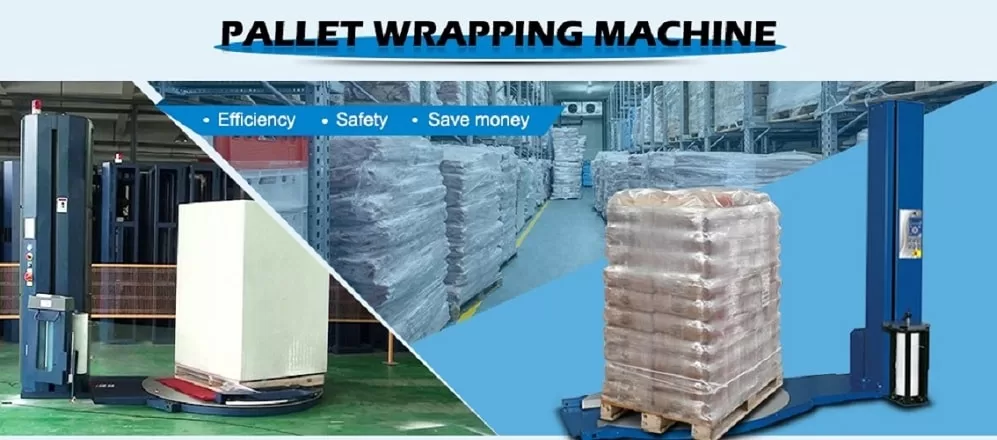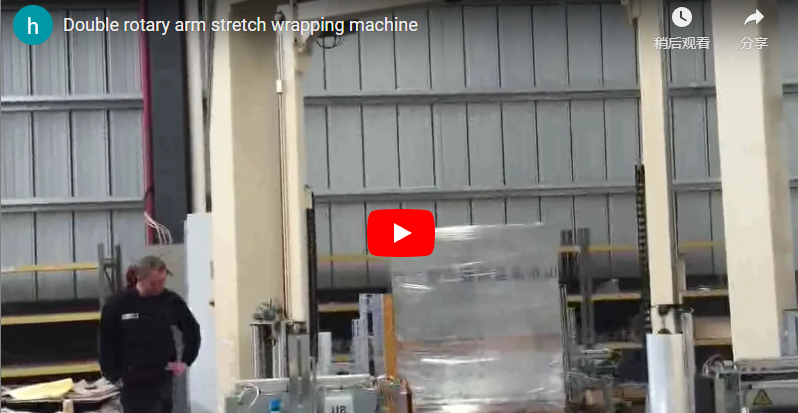Securing Beverage Loads: A Deep Dive into Turntable Pallet Stretch Wrappers
Ensuring pallet stability is paramount in the fast-paced beverage industry. Loads of bottles, cans, and kegs are often heavy, tall, and susceptible to shifting during transit and handling. Damaged goods not only represent lost revenue but can also lead to safety hazards and operational delays. Turntable pallet wrappers have become a cornerstone technology for addressing these challenges, providing reliable and efficient load containment.
1. Why Turntable Wrappers Excel in Beverage Packaging
Turntable pallet wrappers operate on a straightforward principle: the pallet load sits on a rotating platform while a film carriage dispenses stretch film, moving vertically up and down a mast. This method is particularly well-suited for the beverage sector due to:
- Consistent Load Containment: Properly configured machines apply stretch film with consistent tension and overlap, creating a stable, unified load. This is crucial for preventing stacked cases or containers from shifting or collapsing.
- Handling Heavy Loads: Beverage pallets can easily exceed 2,000 lbs (approx. 900 kg). Turntable wrappers designed for this industry typically feature robust construction, heavy-duty turntables, and reliable drive systems capable of handling significant weight without performance degradation.
- Adaptability to Load Profiles: While often uniform, beverage loads can vary. Adjustable wrap parameters allow operators to fine-tune the wrap force, number of top/bottom wraps, and film overlap to suit different products, pallet patterns, and stability requirements.
- Protection of Primary Packaging: Controlled film application minimizes the risk of crushing cans or damaging bottle caps/labels, preserving product integrity and brand presentation.
2. Key Technical Specifications & Features to Consider
When evaluating turntable wrappers for beverage applications, several technical aspects are critical:
- Turntable:
- Diameter: Needs to accommodate the largest pallet footprint used (e.g., 40"x48", 48"x48"). Standard diameters often range from 65" to 72".
- Capacity: Must exceed the maximum weight of your heaviest pallet loads. Capacities typically start around 4,000 lbs and can go higher.
- Speed: Variable speed control (RPM) allows optimization for load stability and throughput.
- Mast Height: Determines the maximum wrapping height. Ensure it comfortably exceeds your tallest loads, accounting for pallet height itself. Standard heights often cover loads up to 80"-90", with extensions available.
- Film Carriage System:
- Powered Pre-Stretch: This is non-negotiable for efficiency. Systems stretch the film before application (commonly 200-300%), maximizing film yield, improving load holding force, and significantly reducing film costs per pallet. Look for easy film threading designs.
- Variable Tension Control: Allows adjustment of film tension throughout the wrap cycle electronically, critical for applying appropriate containment without damaging product.
- Control System:
- PLC (Programmable Logic Controller): Offers reliability and flexibility.
- Wrap Programs: Allows saving multiple pre-set wrapping parameters for different load types, ensuring consistency and simplifying operator tasks.
- Top Sheet Applicators (Optional): For dust or moisture protection, some systems integrate automatic top sheet dispensing.
- Safety Features: Look for perimeter fencing, light curtains, emergency stops, and carriage safety locks.
3. Operational Insights: From an Operator's Perspective
Beyond the specs, day-to-day operation matters. Having spent time on packaging floors, here’s what operators appreciate:
- Ease of Use: Intuitive controls, clear touchscreen interfaces, and straightforward film loading procedures minimize training time and reduce errors. Simple adjustments for parameters like top/bottom wraps, carriage speed, and turntable speed are essential.
- Reliability and Maintenance: Downtime is costly. Machines with robust components, good access for cleaning and routine maintenance (like lubricating the turntable bearing or checking drive chains/belts), and readily available spare parts are preferred. Quick troubleshooting guides or diagnostic screens on the HMI are invaluable.
- Consistent Performance: Operators need confidence that the machine will deliver the same quality wrap every cycle. This relies heavily on the quality of the pre-stretch system and the tension control mechanisms. Film breaks, while sometimes unavoidable (due to film quality or load protrusions), should be infrequent and easy to recover from.
- Managing Film: Knowing how to properly load the film roll, thread it through the pre-stretch rollers, and securely attach it to the pallet initially are key skills. Operators also learn to monitor film usage and anticipate roll changes to maintain workflow.
4. Integration and Automation Levels
Turntable wrappers can range from standalone, semi-automatic units to fully integrated components of an automated packaging line:
- Semi-Automatic: The most common type. An operator places the pallet on the turntable (often via forklift or pallet jack), attaches the film tail, and initiates the wrap cycle via a button or remote. Once complete, the operator cuts the film and removes the pallet.
- Automatic: These systems often integrate with upstream and downstream conveyors. Pallets automatically feed onto the turntable, the wrapping cycle initiates automatically (often triggered by photo-eyes), and the film is automatically clamped, cut, and wiped/sealed to the load before the pallet conveys off. This significantly increases throughput and reduces labor requirements.
- Conveyor Compatibility: For automated setups, ensure the wrapper's turntable height, conveyor options (pass-through or integrated), and control handshaking signals are compatible with your existing or planned conveyor system.

5. Choosing the Right Machine for Your Beverage Operation
Selecting the optimal turntable wrapper involves assessing:
- Load Characteristics: Maximum weight, dimensions (L x W x H), and stability challenges of your typical beverage pallets.
- Throughput Requirements: How many pallets per hour/shift do you need to wrap? This dictates the necessary cycle speed and level of automation.
- Film Efficiency Goals: A quality powered pre-stretch system is key to controlling ongoing film costs.
- Operational Environment: Space constraints, power availability, and integration needs.
- Budget: Balance initial investment against long-term operational savings (film, labor, damage reduction).
- Vendor Support: Consider availability of technical support, training, and spare parts.
Conclusion: An Essential Tool for Beverage Logistics
In the demanding beverage industry, turntable pallet stretch wrappers are not just convenient; they are essential for protecting products, ensuring load safety, and optimizing packaging efficiency. By carefully considering the technical specifications, operational factors, and level of automation needed, beverage manufacturers and distributors can implement robust wrapping solutions that safeguard their goods from the production line to the final destination.
For more information on specific stretch wrapping solutions, visit Fhopepack Stretch Wrapping Machines.
Contact us for inquiries: info@fhopepack.com






